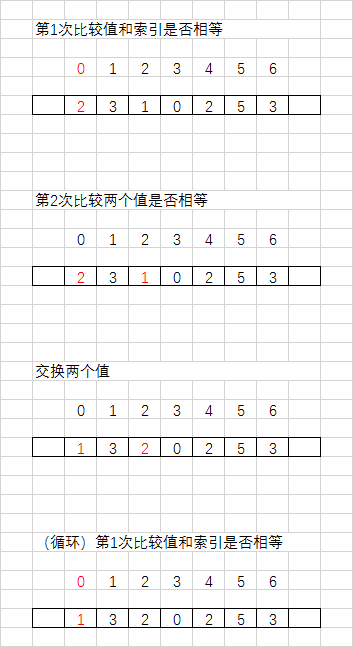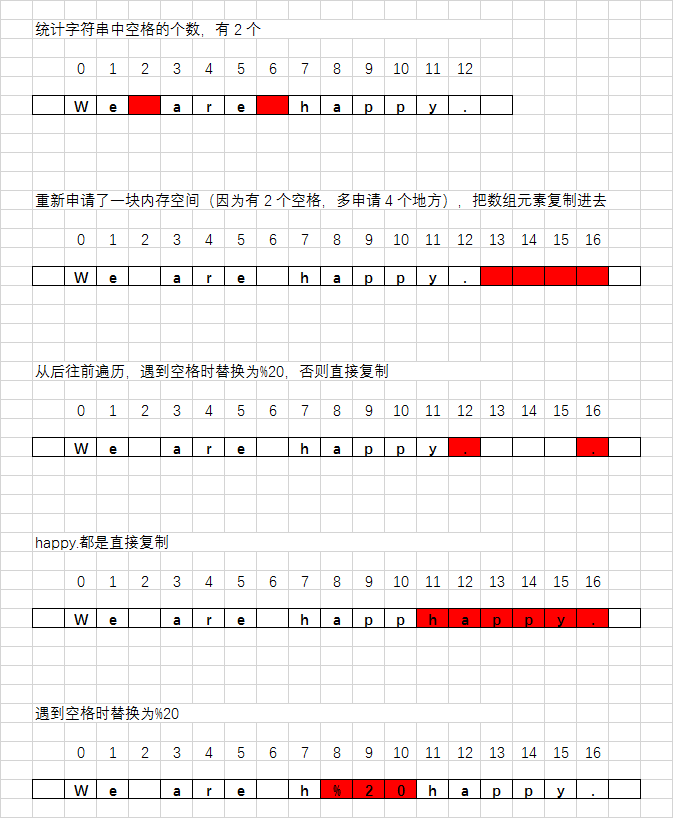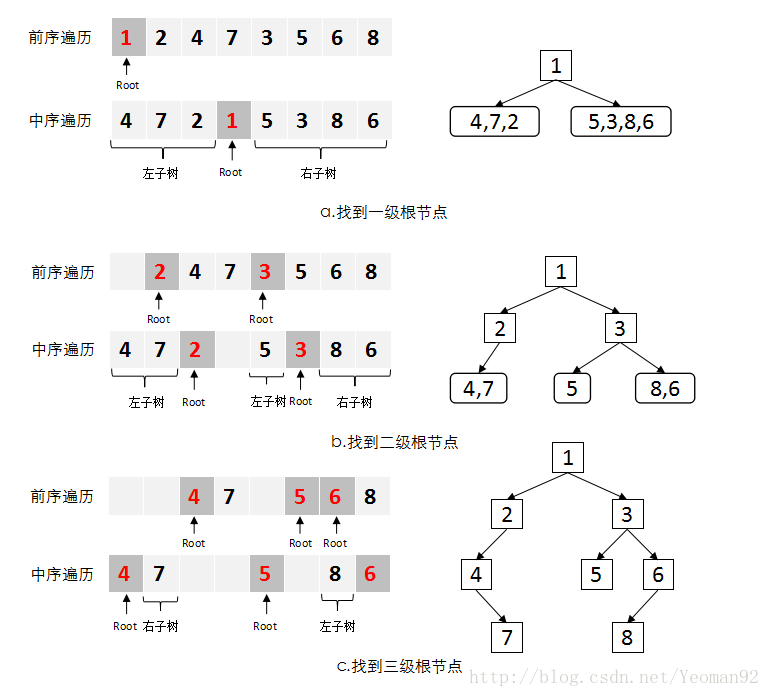Reference 赋值运算符函数 Java 不支持用户自定义操作符重载。
实现 Singleton 模式 设计一个类,我们只能生成该类的一个实例。
饿汉式 1 2 3 4 5 6 7 8 9 public class SingleTon {private static SingleTon mSingleTon = new SingleTon ();private SingleTon () {}public static SingleTon getInstance () {return mSingleTon;
懒汉式(线程不安全) 1 2 3 4 5 6 7 8 9 10 11 12 public class SingleTon {private static SingleTon mSingleTon = null ;private SingleTon () {}public static SingleTon getInstance () {if (mSingleTon == null ) {new SingleTon ();return mSingleTon;
懒汉式(线程安全) 1 2 3 4 5 6 7 8 9 10 11 12 public class SingleTon {private static SingleTon mSingleTon = null ;private SingleTon () {}public static synchronized SingleTon getInstance () {if (mSingleTon == null ) {new SingleTon ();return mSingleTon;
懒汉式(双重校验锁,线程不一定安全) 1 2 3 4 5 6 7 8 9 10 11 12 13 14 15 16 public class SingleTon {private static SingleTon mSingleTon = null ;private SingleTon () {}public static SingleTon getInstance () {if (mSingleTon == null ){synchronized (SingleTon.class) {if (mSingleTon == null ) {new SingleTon ();return mSingleTon;
懒汉式(双重校验锁,线程安全) 1 2 3 4 5 6 7 8 9 10 11 12 13 14 15 16 public class SingleTon {private static volatile SingleTon mSingleTon = null ;private SingleTon () {}public static SingleTon getInstance () {if (mSingleTon == null ){synchronized (SingleTon.class) {if (mSingleTon == null ) {new SingleTon ();return mSingleTon;
枚举 1 2 3 4 5 enum SingleTon {
静态内部类 1 2 3 4 5 6 7 8 9 10 11 public class SingleTon {private static class InnerClass {static SingleTon mSingleTon = new SingleTon ();private SingleTon () {}public static SingleTon getInstance () {return InnerClass.mSingleTon;
数组中重复的数字 找出数组中重复的数字 在一个长度为 n 的数组里的所有数字都在 0 到 n-1 的范围内。数组中某些数字是重复的,但不知道有几个数字重复了。也不知道每个数字重复了几次。请找出数组中任意一个重复的数字。例如,如果输入长度为 7 的数组 {2, 3, 1, 0, 2, 5, 3},那么对应的输出是重复的数字 2 或者 3。
思路:
实现:
1 2 3 4 5 6 7 8 9 10 11 12 13 14 15 public static int find (int [] arr) {for (int i = 0 , size = arr.length; i < size; i++) {while (arr[i] != i) {if (arr[i] == arr[arr[i]]) {return arr[i];int temp = arr[i];return -1 ;
1 2 3 int [] arr = {2 , 3 , 1 , 0 , 2 , 5 , 3 };int value = find(arr);"value:" + value);
时间复杂度:O(n)。代码中尽管有一个两重循环,但每个数字最多只要交换两次就能找到位置。
不修改数组找出重复的数字 在一个长度为 n + 1 的数组里的所有数字都在 1 到 n 的范围内,所以数组中至少有一个数字是重复的。请找出数组中任意一个重复的数字,但不能修改输入的数组。例如,如果输入长度为 8 的数组 {2, 3, 5, 4, 3, 2, 6, 7},那么对应的输出是重复的数字 2 或者 3。
思路:
实现:
1 2 3 4 5 6 7 8 9 10 11 12 13 14 15 16 17 18 19 20 21 22 23 24 25 26 27 28 29 30 31 32 public static int find (int [] arr) {int start = 1 ;int end = arr.length - 1 ;while (end >= start) {int middle = ((end - start) >> 1 ) + start;int count = count(arr, start, middle);if (start == middle) {if (count > 1 ) {return start;else {break ;if (count > middle - start + 1 ) {else {1 ;return -1 ;private static int count (int [] arr, int start, int middle) {int count = 0 ;for (int i : arr) {if (i >= start && i <= middle) {return count;
1 2 3 int [] arr = {2 , 3 , 5 , 4 , 3 , 2 , 6 , 7 };int value = find(arr);"value:" + value);
时间复杂度:O(nlogn)。数组长度为 n,是 O(n),二分查找是 O(logn),所以总时间是 O(nlogn)。
二维数组中的查找 在一个二维数组中,每一行都按照从左到右递增的顺序排序,每一列都按照从上到下递增的顺序排序。请完成一个函数,输入这样的一个二维数组和一个整数,判断数组中是否含有该整数。
思路:
实现:
1 2 3 4 5 6 7 8 9 10 11 12 13 14 15 16 17 18 19 20 21 22 23 24 25 26 27 28 29 30 31 32 33 34 35 36 37 38 39 40 41 42 43 44 45 46 47 48 49 50 51 52 53 54 public static boolean contain (int [][] arr, int target) {int maxCol = findMaxCol(arr, target);if (arr[0 ][maxCol] == target) {return true ;int maxRow = findMaxRow(arr, target);if (arr[maxRow][0 ] == target) {return true ;for (int j = maxCol; j >= 0 ; j--) {for (int i = maxCol - j; i <= maxRow; i++) {if (arr[i][j] == target) {return true ;else if (arr[i][j] > target) {break ;return false ;private static int findMaxCol (int [][] arr, int target) {int start = 0 ;int end = arr[0 ].length - 1 ;while (end >= start) {int middle = ((end - start) >> 1 ) + start;if (arr[0 ][middle] == target) {return middle;else if (arr[0 ][middle] > target) {1 ;else {1 ;return start - 1 ;private static int findMaxRow (int [][] arr, int target) {int start = 0 ;int end = arr.length - 1 ;while (end >= start) {int middle = ((end - start) >> 1 ) + start;if (arr[middle][0 ] == target) {return middle;else if (arr[middle][0 ] > target) {1 ;else {1 ;return start - 1 ;
1 2 3 int [][] arr = {{1 , 2 , 8 , 9 }, {2 , 4 , 9 , 12 }, {4 , 7 , 10 , 13 }, {6 , 8 , 11 , 15 }};boolean b = contain(arr, 7 );"contain:" + b);
时间复杂度:
替换空格 请实现一个函数,把字符串中的每个空格替换成"%20"。例如,输入"We are happy.“,则输出"We%20are%20happy.”。
思路:
实现:
1 2 3 4 5 6 7 8 9 10 11 12 13 14 15 16 17 18 19 20 21 22 public static void convert (StringBuffer stringBuffer) {int count = 0 ;for (int i = 0 , size = stringBuffer.length(); i < size; i++) {if (stringBuffer.charAt(i) == ' ' ) {int oldLen = stringBuffer.length();int newLen = oldLen + (count << 1 );for (int i = oldLen - 1 , j = newLen - 1 ; i >= 0 ; i--, j--) {char c = stringBuffer.charAt(i);if (c == ' ' ) {'0' );'2' );'%' );else {
1 2 3 4 StringBuffer stringBuffer = new StringBuffer ("We are happy." );"stringBuffer:" + stringBuffer.toString());"stringBuffer:" + stringBuffer.toString());
时间复杂度:O(n)。
相关题目:把数组 A2 中的所有数字插入数组 A1 中 有两个排序的数组 A1 和 A2,内存在 A1 的末尾有足够多的空余空间容纳 A2。请实现一个函数,把 A2 中的所有数字插入 A1 中,并且所有的数字是排序的。
思路:
实现:
1 2 3 4 5 6 7 8 9 10 11 12 13 14 15 16 17 18 19 20 21 22 23 24 25 26 27 28 29 30 31 32 33 34 35 36 37 38 39 40 41 42 int [] arr1src = new int [10 ];int [] arr2 = new int [10 ];int beforeValue = 0 ;for (int i = 0 , size = arr1src.length; i < size; i++) {int random = new Random ().nextInt(10 );0 ;for (int i = 0 , size = arr2.length; i < size; i++) {int random = new Random ().nextInt(10 );int [] arr1 = new int [100 ];0 , arr1, 0 , arr1src.length); "arr1:" + Arrays.toString(arr1));"arr2:" + Arrays.toString(arr2));int i = arr1src.length - 1 , j = arr2.length - 1 , index = arr1src.length + arr2.length - 1 ;while (i >= 0 && j >= 0 ) {int v1 = arr1[i];int v2 = arr2[j];if (v1 == v2) {else if (v1 > v2) {else {if (j >= 0 ) { 0 , arr1, 0 , j + 1 );"arr1:" + Arrays.toString(arr1));
时间复杂度:O(n)。
从尾到头打印链表 输入一个链表的头节点,从尾到头反过来打印出每个节点的值。
思路:
实现:
1 2 3 4 5 6 7 8 9 10 11 12 13 14 15 16 17 18 19 20 21 22 23 24 public class Node {private int value;private Node next;public Node (int value, Node next) {this .value = value;this .next = next;public Node getNext () {return this .next;public int getValue () {return this .value;public static void print (Node node) {if (node.getNext() != null ) {"value:" + node.getValue());
1 2 3 4 5 6 7 8 9 10 11 12 13 Node node = null ;for (int i = 10 ; i > 0 ; i--) {new Node (i, node);Node firstNode = node;while (node != null ) {"value:" + node.getValue());
时间复杂度:O(n)。
重建二叉树 输入某二叉树的前序遍历和中序遍历的结果,请重建出该二叉树。假设输入的前序遍历和中序遍历的结果中都不含重复的数字。例如输入前序遍历序列{1, 2, 4, 7, 3, 5, 6, 8}和中序遍历序列{4, 7, 2, 1, 5, 3, 8, 6},则重建二叉树并输出它的头节点。
思路:
实现:
1 2 3 4 5 6 7 8 9 10 11 12 13 14 15 16 17 18 19 20 21 22 23 24 25 26 27 28 29 30 31 32 33 34 35 36 37 38 39 40 41 42 43 44 45 public class Node {private int value;private Node left;private Node right;public Node (int value) {this .value = value;public int getValue () {return this .value;public Node getLeft () {return left;public void setLeft (Node left) {this .left = left;public Node getRight () {return right;public void setRight (Node right) {this .right = right;public Node create (int [] preorderArr, int [] inorderArr) {if (preorderArr == null || preorderArr.length == 0 ||null || inorderArr.length == 0 ) {return null ;Node node = new Node (preorderArr[0 ]);for (int i = 0 , size = inorderArr.length; i < size; i++) {if (preorderArr[0 ] == inorderArr[i]) { 1 , i + 1 ), Arrays.copyOfRange(inorderArr, 0 , i)));1 , preorderArr.length), Arrays.copyOfRange(inorderArr, i + 1 , inorderArr.length)));return node;
1 2 3 4 5 int [] preorderArr = {1 , 2 , 4 , 7 , 3 , 5 , 6 , 8 };int [] inorderArr = {4 , 7 , 2 , 1 , 5 , 3 , 8 , 6 };Node node = create(preorderArr, inorderArr);"node:" + node.getValue());
时间复杂度:O(nlogn)。
扩展:输入某二叉树的中序遍历和后序遍历的结果,重建出该二叉树 思路:
实现:
1 2 3 4 5 6 7 8 9 10 11 12 13 14 15 private Node create (int [] inorderArr, int [] postorderArr) {if (inorderArr == null || inorderArr.length == 0 ||null || postorderArr.length == 0 ) {return null ;Node node = new Node (postorderArr[postorderArr.length - 1 ]);for (int i = 0 , size = inorderArr.length; i < size; i++) {if (postorderArr[postorderArr.length - 1 ] == inorderArr[i]) { 0 , i), Arrays.copyOfRange(postorderArr, 0 , i)));1 , inorderArr.length), Arrays.copyOfRange(postorderArr, i, postorderArr.length - 1 )));return node;
1 2 3 4 5 int [] inorderArr = {4 , 7 , 2 , 1 , 5 , 3 , 8 , 6 };int [] postorderArr = {7 , 4 , 2 , 5 , 8 , 6 , 3 , 1 };Node node = create(inorderArr, postorderArr);"node:" + node.getValue());
二叉树的下一个节点 给定一棵二叉树和其中的一个节点,如何找出中序遍历序列的下一个节点?树中的结点除了有两个分别指向左、右子节点的指针,还有一个指向父节点的指针。
思路:
实现:
1 2 3 4 5 6 7 8 9 10 11 12 13 14 15 16 17 18 19 20 21 22 23 24 25 26 27 28 29 30 31 32 33 34 35 36 37 38 39 40 41 42 43 44 45 46 47 48 49 50 51 52 53 54 55 56 57 58 59 public class Node {private char value;private Node left;private Node right;private Node parent;public Node (char value) {this .value = value;public char getValue () {return this .value;public Node getLeft () {return left;public void setLeft (Node left) {this .left = left;this );public Node getRight () {return right;public void setRight (Node right) {this .right = right;this );public Node getParent () {return parent;public void setParent (Node parent) {this .parent = parent;public Node inorderNext (Node node) {if (node.getRight() != null ) {while (node.getLeft() != null ) {return node;else {while (node.getParent() != null ) {if (node.equals(node.getParent().getLeft())) {return node.getParent();else {return null ;
1 2 3 4 5 6 7 8 9 10 11 12 13 14 15 16 17 18 19 20 21 22 new ArrayList <>(14 );for (int i = 0 ; i < 14 ; i++) {new Node ((char ) ('A' + i)));0 ).setLeft(list.get(1 ));0 ).setRight(list.get(2 ));1 ).setLeft(list.get(3 ));1 ).setRight(list.get(4 ));2 ).setLeft(list.get(5 ));2 ).setRight(list.get(6 ));3 ).setRight(list.get(7 ));4 ).setLeft(list.get(8 ));4 ).setRight(list.get(9 ));5 ).setRight(list.get(10 ));6 ).setLeft(list.get(11 ));6 ).setRight(list.get(12 ));7 ).setLeft(list.get(13 ));for (Node node : list) {"node:" + node.getValue() + "; next node:" + ((node = inorderNext(node)) == null ? "null" : node.getValue()));
时间复杂度:
扩展:前序遍历 思路:前序遍历的顺序是节点->左子节点->右子节点。
实现:
1 2 3 4 5 6 7 8 9 public static void preorder (ArrayList<Node> list, Node node) {if (node.getLeft() != null ) {if (node.getRight() != null ) {
1 2 3 4 5 ArrayList<Node> preorderList = new ArrayList <>(14 );0 ));for (Node node : preorderList) {"node:" + node.getValue());
扩展:中序遍历 思路:中序遍历的顺序是左子节点->节点->右子节点。
实现:
1 2 3 4 5 6 7 8 9 public static void inorder (ArrayList<Node> list, Node node) {if (node.getLeft() != null ) {if (node.getRight() != null ) {
1 2 3 4 5 ArrayList<Node> inorderList = new ArrayList <>(14 );0 ));for (Node node : inorderList) {"node:" + node.getValue());
扩展:后序遍历 思路:后序遍历的顺序是左子节点->右子节点->节点。
实现:
1 2 3 4 5 6 7 8 9 public static void postorder (ArrayList<Node> list, Node node) {if (node.getLeft() != null ) {if (node.getRight() != null ) {
1 2 3 4 5 ArrayList<Node> postorderList = new ArrayList <>(14 );0 ));for (Node node : postorderList) {"node:" + node.getValue());
扩展:给定一棵二叉树和其中的一个节点,找出前序遍历序列的下一个节点 思路:
实现:
1 2 3 4 5 6 7 8 9 10 11 12 13 14 15 16 public Node preorderNext (Node node) {if (node.getLeft() != null ) {return node.getLeft();else if (node.getRight() != null ) {return node.getRight();else {while (node.getParent() != null ) {if (node.equals(node.getParent().getLeft()) && node.getParent().getRight() != null ) {return node.getParent().getRight();else {return null ;
1 2 3 4 Node node = list.get(0 );while (node != null ) {"node:" + node.getValue() + "; next node:" + ((node = preorderNext(node)) == null ? "null" : node.getValue()));
扩展:给定一棵二叉树和其中的一个节点,找出后序遍历序列的下一个节点 思路:
实现:
1 2 3 4 5 6 7 8 9 10 11 12 13 14 15 16 17 18 19 20 21 22 23 24 25 26 public Node postorderNext (Node node) {if (node.getParent() == null ) {return null ;else {if (node.equals(node.getParent().getLeft())) {if (node.getParent().getRight() == null ) {return node.getParent();else {while (node != null ) {while (node.getLeft() != null ) {if (node.getRight() == null ) {return node;else {else {return node.getParent();return null ;
1 2 3 for (Node node : list) {"node:" + node.getValue() + "; next node:" + ((node = postorderNext(node)) == null ? "null" : node.getValue()));
用两个栈实现队列 用两个栈实现一个队列,分别完成在队列尾部插入节点和在队列头部删除节点的功能。
思路:
实现:
1 2 3 4 5 6 7 8 9 10 11 12 13 14 15 16 17 18 19 20 21 22 23 24 25 26 27 public class Queue <T> {private Stack<T> stack1;private Stack<T> stack2;public Queue () {new Stack <>();new Stack <>();public void push (T t) {public T pop () {if (stack2.isEmpty()) {while (!stack1.isEmpty()) {return stack2.pop();@Override public String toString () {return "stack1:" + stack1.toString() + "\nstack2:" + stack2.toString();
1 2 3 4 5 6 7 8 9 10 11 12 13 14 15 Queue<Integer> queue = new Queue <>();for (int i = 0 ; i < 20 ; i++) {int random = new Random ().nextInt(128 );if ((random & 4 ) == 0 ) {try {Integer pop = queue.pop();"pop:" + pop + "\n" + queue.toString());catch (EmptyStackException e) {else {"push:" + random + "\n" + queue.toString());
时间复杂度:
相关题目:用两个队列实现一个栈 思路:
实现:
1 2 3 4 5 6 7 8 9 10 11 12 13 14 15 16 17 18 19 20 21 22 23 24 25 26 27 28 29 30 31 32 33 34 35 36 public class Stack <T> {private ArrayDeque<T> queue1;private ArrayDeque<T> queue2;private ArrayDeque<T> pushQueue;private ArrayDeque<T> popQueue;public Stack (int capacity) {new ArrayDeque <>(capacity);new ArrayDeque <>(capacity);public void push (T t) {public T pop () {for (int i = 0 , size = pushQueue.size(); i < size - 1 ; i++) {if (pushQueue == queue1) {else {return popQueue.removeFirst();@Override public String toString () {return "queue1:" + queue1.toString() + "\nqueue2:" + queue2.toString();
1 2 3 4 5 6 7 8 9 10 11 12 13 14 15 Stack<Integer> stack = new Stack <>(20 );for (int i = 0 ; i < 20 ; i++) {int random = new Random ().nextInt(128 );if ((random & 6 ) == 0 ) {try {Integer pop = stack.pop();"pop:" + pop + "\n" + stack.toString());catch (NoSuchElementException e) {else {"push:" + random + "\n" + stack.toString());
斐波那契数列 求斐波那契数列的第 n 项。
思路:
实现:
1 2 3 4 5 6 7 8 9 10 11 12 13 14 15 16 17 public static int fibonacci (int n) {if (n == 0 ) {return 0 ;else if (n == 1 ) {return 1 ;else {int preTwo = 0 ;int preOne = 1 ;int value = 0 ;for (int i = 2 ; i <= n; i++) {return value;
1 2 3 for (int n = 0 ; n < 10 ; n++) {"fibonacci[" + n + "]:" + fibonacci(n));
时间复杂度:O(n)。
题目二:青蛙跳台阶问题 一只青蛙一次可以跳上 1 级台阶,也可以跳上 2 级台阶。求该青蛙跳上一个 n 级的台阶总共有多少种跳法。
思路:
实现:
1 2 3 4 5 6 7 8 9 10 11 12 13 14 15 16 17 public static int jump (int n) {if (n == 1 ) {return 1 ;else if (n == 2 ) {return 2 ;else {int preTwo = 1 ;int preOne = 2 ;int value = 0 ;for (int i = 3 ; i <= n; i++) {return value;
1 2 3 for (int n = 1 ; n < 10 ; n++) {"jump[" + n + "]:" + jump(n));
本题扩展:青蛙跳 n 级台阶时,一次最多可以跳 n 级 在青蛙跳台阶的问题中,如果把条件改成:一只青蛙一次可以跳上 1 级台阶,也可以跳上 2 级台阶……它也可以跳上 n 级,此时该青蛙跳上一个 n 级的台阶总共有多少种跳法?我们用数学归纳法可以证明 f(n) = 2^(n - 1)。
思路:
实现:
1 2 3 4 5 6 7 8 9 10 11 public static int jump (int n) {if (n == 1 ) {return 1 ;else {int value = 1 ;for (int i = 1 ; i < n; i++) {2 ;return value;
1 2 3 for (int n = 1 ; n < 10 ; n++) {"jump[" + n + "]:" + jump(n));
相关题目:用 2 x 1 的小矩形横着或者竖着去覆盖 2 x n 的大矩形 我们可以用 2 x 1 的小矩形横着或者竖着去覆盖更大的矩形。请问用 n 个 2 x 1 的小矩形无重叠地覆盖一个 2 x n 的大矩形,总共有多少种方法?
思路:
实现:
1 2 3 4 5 6 7 8 9 10 11 12 13 14 15 16 17 public static int jump (int n) {if (n == 1 ) {return 1 ;else if (n == 2 ) {return 2 ;else {int preTwo = 1 ;int preOne = 2 ;int value = 0 ;for (int i = 3 ; i <= n; i++) {return value;
1 2 3 for (int n = 1 ; n < 10 ; n++) {"jump[" + n + "]:" + jump(n));



